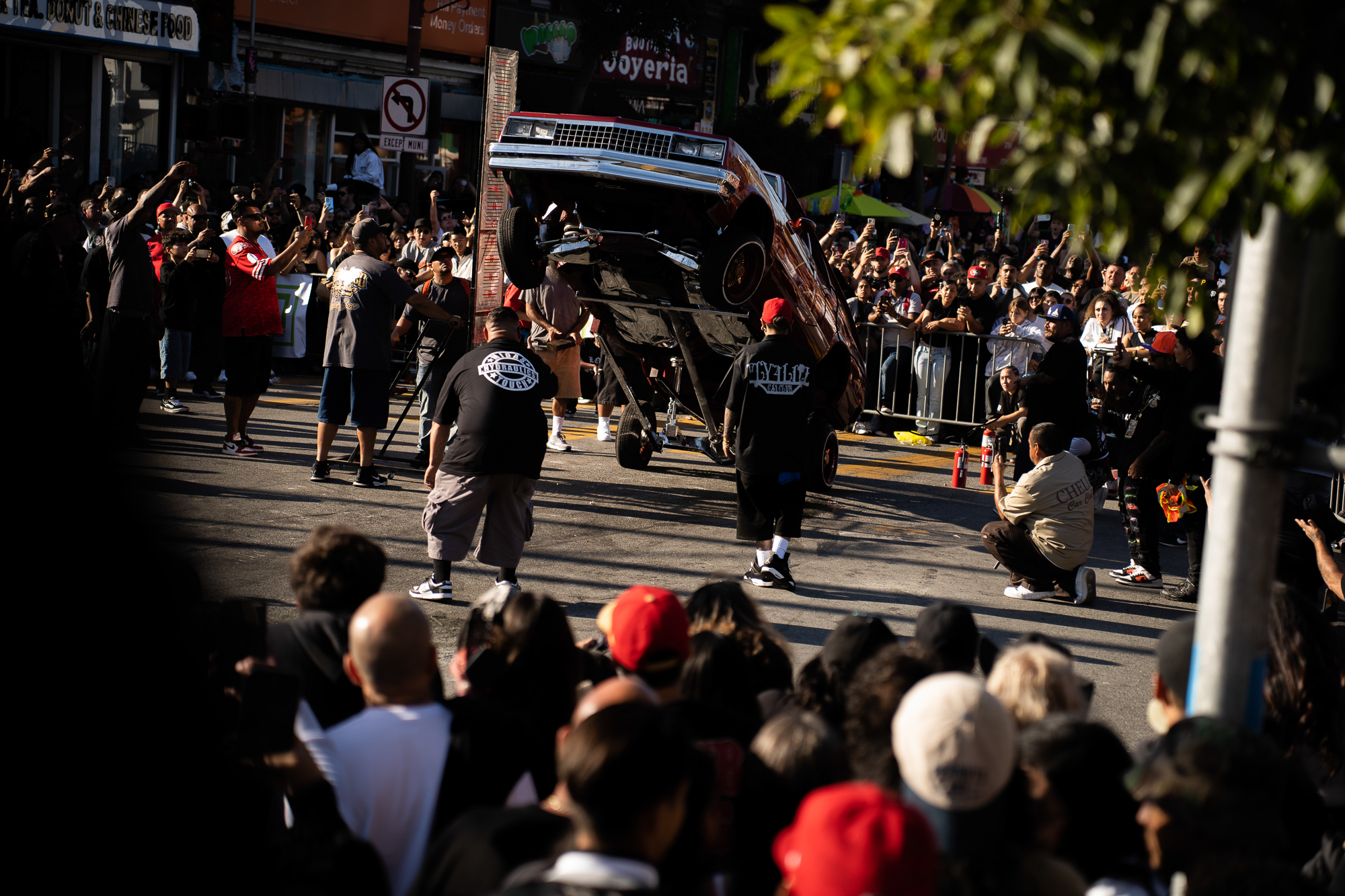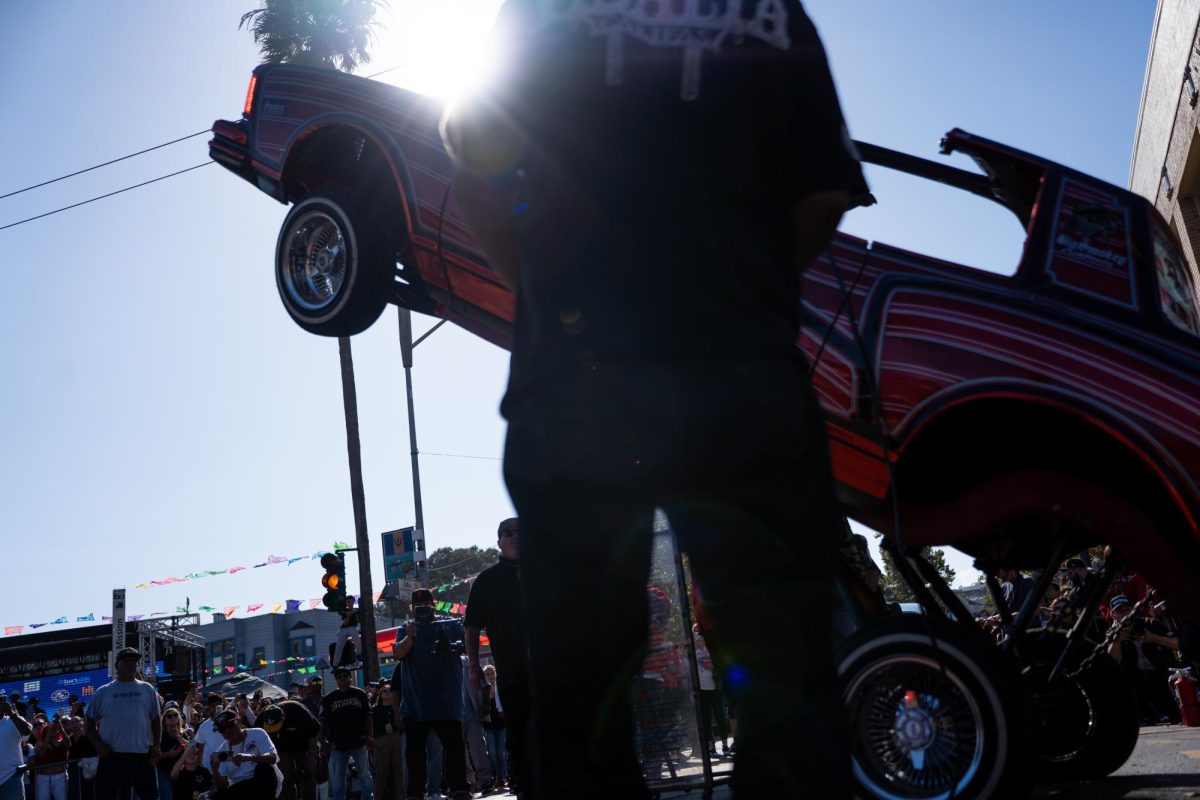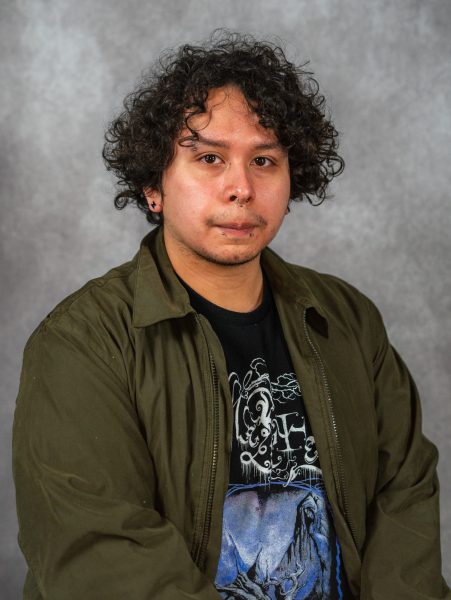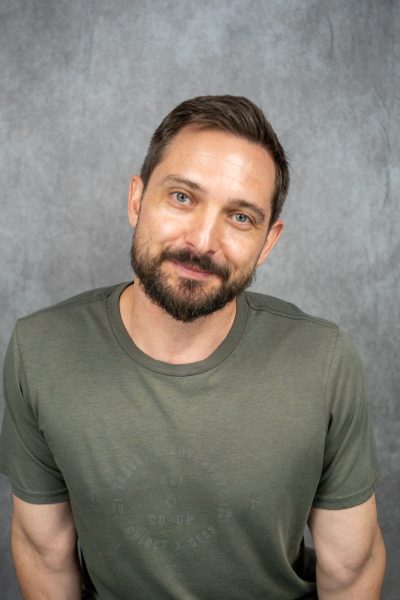Hundreds of chrome bumpers gleamed in the sunlight as multicolored mechanical expressions of art cruised, hopped and three-wheeled through San Francisco’s Mission District Sept. 20 in King of the Streets, the first ever televised and live-streamed lowrider parade.
The San Francisco Lowrider Council hosted the car show in partnership with the City of San Francisco, the Mission Merchants Association and the Calle 24 Latino Cultural District as part of Latine Heritage month. To accompany the event, the Council orchestrated a number of Latine-related events and resources, including live-music performances and financial assistance for families recently affected by ICE raids.
CBS News televised the parade and the following Thrill of the Hop car-hopping competition, in which cars with hydraulic suspension attempted to bounce as high as possible. Participants of Thrill of the Hop had a chance to be crowned King of the Streets Champion and win a $10,000 cash prize.
Influential Chicano artist David Gonzales, who pushed Chicano culture into the mainstream with his Homies cartoons, figurines and apparel designs in the ’90s, acted as the honorary leader of the parade this year.
According to a press release of the event, Roberto Y. Hernández founded the San Francisco Low Rider Council in 1981 to celebrate the art of lowriding and in opposition of racial discrimination toward young Latino men. Now, with the city’s sanction and thousands of onlookers celebrating the parade, the Council has proved that the Latine roots haven’t withered from decades of vilification, but thrived on good vibes and community building.
“This parade isn’t just about lowriders — it’s about our right to exist, to resist, and to celebrate our culture in the streets where we were once criminalized,” Hernández said. “We’re still here. And now, the world will see us, live and proud on television.”
Lowrider culture faced opposition since it began with cities prohibiting modifications that would lower a car’s frame. California lawmakers eventually introduced a bill that permitted local governments to issue anti-cruising ordinances that prevented lowriders from driving slowly and with their suspension lowered—yet lowriders still continued to cruise down the streets.
This law stayed in effect until 2023, when Gov. Gavin Newsom signed AB 436, which removed local authorities’ ability to prohibit lowriding in California.
Now free from legal prosecution dozens of car clubs from across the state showed up to display their creations; members of local club Frisco’s finest, sporting their red shirts, were scattered throughout the crowd.
Mo Dunn, a Frisco’s Finest member, said this day was history in the making.
“This is the first time they’ve ever shut down the streets, legally. The first time they’re actually hosting a car show on Mission Street,” he said. “It’s huge, because before they always looked down upon it. And now we’re past that. It’s a community event that brings out everybody, from kids to moms and grandparents.”
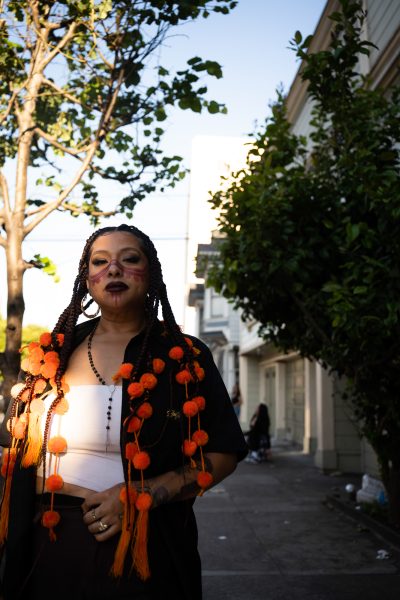
San Francisco Lowrider Council member Vilma Gutierrez reminisced about her time growing up in the Mission, watching lowriders cruising at car shows.
“The event is like a full circle, me being a little girl seeing this and now it’s televised,” Gutierrez said. “Now it’s like I’m not going to get in trouble. We’re OK. Cops are literally here, not because they’re going to kick us out. They’re here to make sure everything goes smoothly.”
Chuck Coy, a San Diego resident visiting family in the area, attended the parade for the first time after catching word of it and was taken back by the large turnout.
“It’s just so beautiful to see all these people coming together. And the art behind these cars. It’s like a physical representation of passion. You can’t do it unless you love it,” Coy said. “Obviously, there’s been a ton of fucked up shit going around, and this gives me hope that things are gonna work out.”
His brother, San Francisco native Matt Coy, came to admire the cars. He considers lowrider maintenance the epitome of car collecting because of the effort owners put in to stay period correct.
“If you have a ‘60s Impala, you’re only going to put ‘60s Impala parts in it,” he said. “And where the hell can you find 1960s Impala parts? You have to dig through somebody’s garage, or be on Facebook marketplace five hours a day, just grinding.”
However some residents, such as Holly, who lives in an apartment near the event, said, “It’s too loud,” which lowrider culture often is. From the blaring bass of a deluxe sound system to the vibrant artistry that coats many of the car’s liveries, the culture is defined by its ability to be striking and provocative.
Jean Carlo, from Stockton, said he was scared of attending because of unchecked ICE deportations across the nation, but wasn’t deterred from attending.
“I grew up in the culture; we don’t really give up on trying to enjoy ourselves. We’re going to show up for our community,” Carlo said.



